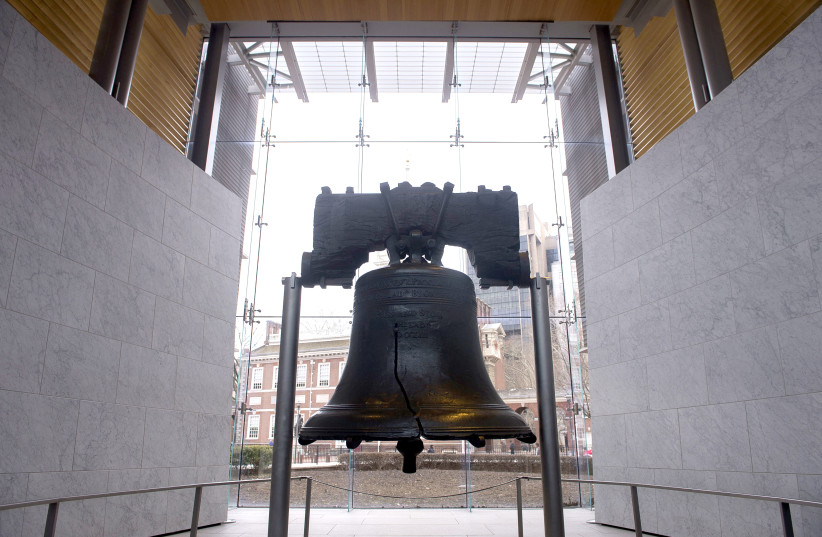A decades-old mystery has finally been solved surrounding just how a Liberty Bell replica at Israel's Knesset seemingly vanished and ended up in Jerusalem's Liberty Bell Park, thanks to an investigation of letters in the Knesset Archives.
The investigation was undertaken as part of the preparations for the Knesset's 74th birthday.
As a result of the information in these letters ringing of truth, the mystery behind one of Jerusalem's iconic landmarks has, at long last, been solved.
Why is there a Liberty Bell in Israel?
Back in 1955, Isael's second Knesset was given a replica of the Liberty Bell by representatives of the US city of Philadelphia, home to the original Liberty Bell.
This was meant to be placed in the Knesset building, construction on which was set to start.

However, it somehow ended up in Liberty Bell Park in 1976, near the historic neighborhood of Yemin Moshe. And nobody can remember how or why.
But these letters discovered by the Knesset Archives team seem to finally reveal the truth.
Unbell-ievable! The truth behind the Jerusalem bell mystery
In the lead-up to the Knesset's 74th birthday, staffers parsed through the many files in the Knesset archives for any exciting or nostalgic stories from the building's early days.
It was during this that a previously unknown series of letters was discovered, detailing an exchange between then-Knesset speaker Yisrael Yeshayahu and then-Jerusalem mayor Teddy Kollek.
Kollel is a mayor who is remembered for his influence and importance in the city's history, having served seven separate terms as mayor, from 1965 to 1993. It was under his municipal leadership that Jerusalem grew into the sprawling modern city it is today, earning him the epitaph "the greatest builder of Jerusalem since Herod."
One of the many things he helped build in the city was Liberty Bell Park, designed by architect Ulrik Plesner, which opened in 1976 to commemorate the US bicentennial.
While some might think that, given the name, the park was just named after the Liberty Bell replica statue. But as revealed in the letters between Kollek and Yeshayahu, that actually wasn't the case.
As the letters explain, it was Kollek who asked for the Liberty Bell statue to be moved from the Knesset to the park. The reason, he explained, is because they were already looking for a Liberty Bell replica for Liberty Bell Park but remembered that there already is one in Israel – but its location in the Knesset means that the general public doesn't usually get a chance to see it.
Yeshayahu replied exactly one week later, agreeing to transfer the bell to the park.
However, he had one condition: There must be some sort of clear indication that the bell was placed there either at the discretion of the Knesset or with its permission, in order to meet the obligations given to them by the statue's donors. However, no such indicator was ever put in place. As a result, its sudden appearance in the park became a mystery.
Knesset Archives director Inda Novominsky was ecstatic at the discovery, explaining that they had been trying to solve this mystery for years, turning to experts, the Jerusalem City Archive and even reaching out to the public through social media and radio.
But it turns out the answer was within the Knesset all along.
However, this wasn't too surprising in retrospect, since not every letter in the archives has been properly cataloged or digitized.
Knesset events and ceremonies head Liat Shimoni-Konitzki remarked on the irony of the situation, having solved the mystery on the Knesset's birthday.
She noted: "It is customary to receive gifts on a birthday, but now we are learning how the Knesset gave one of the most important gifts to the city of Jerusalem."
